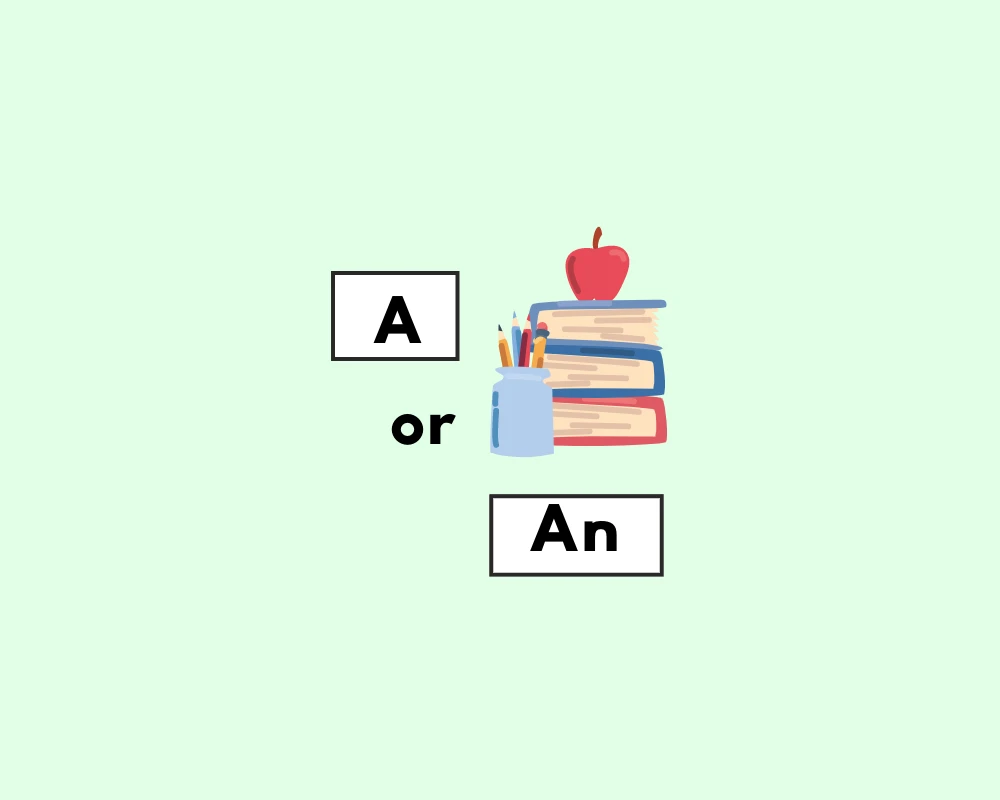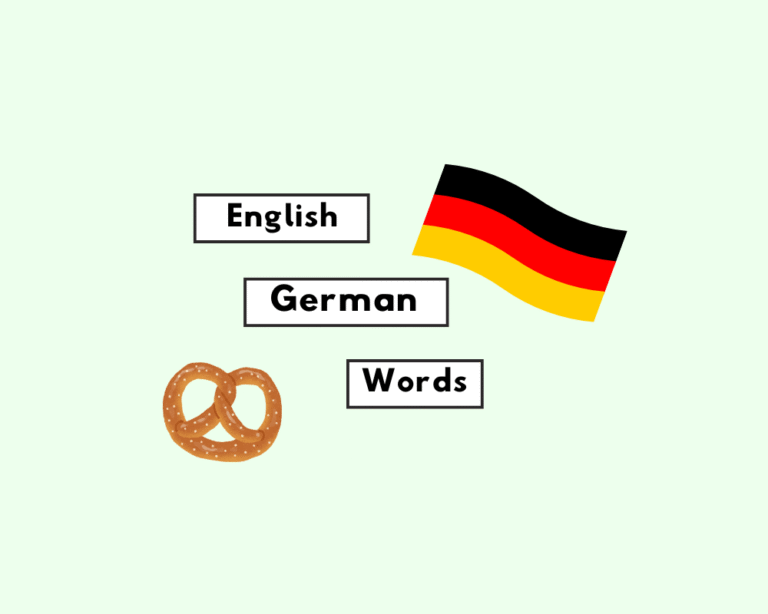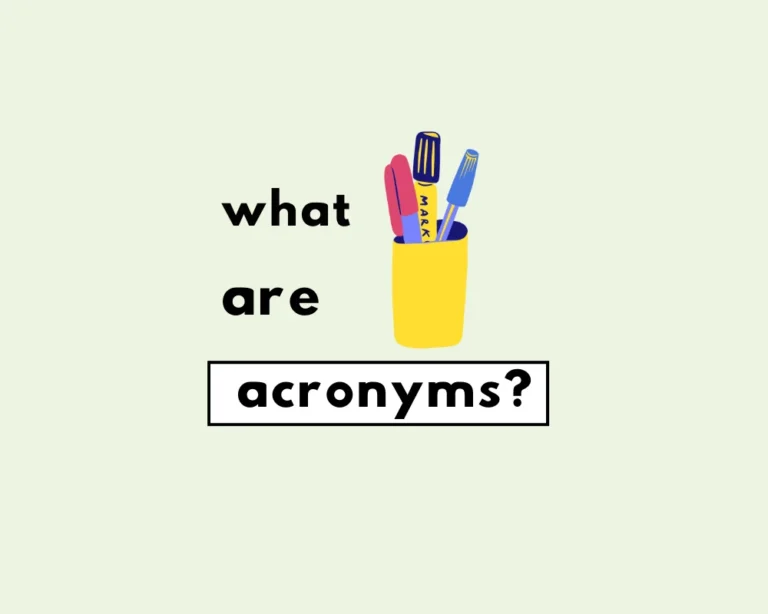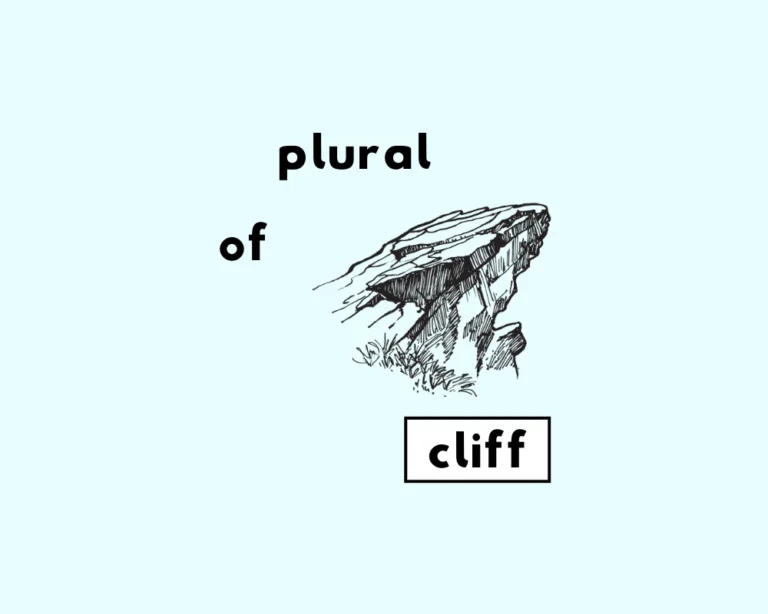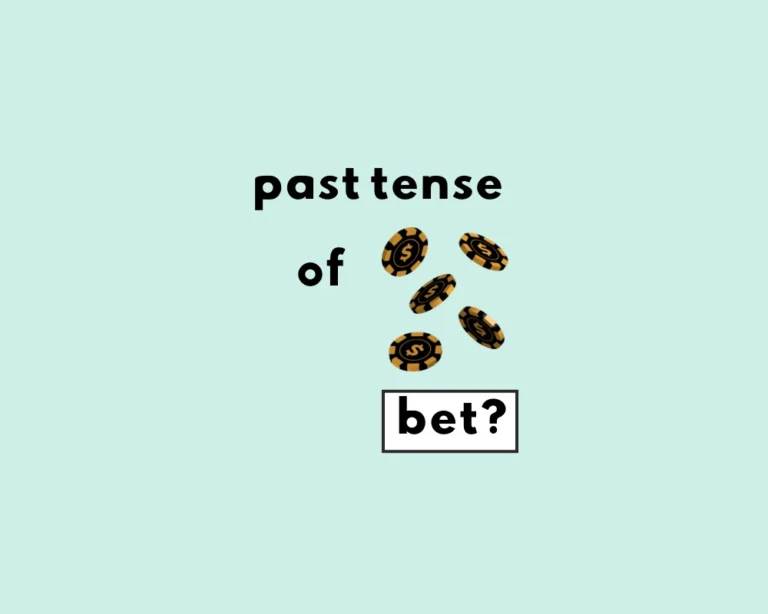What are a & an in grammar?
A or an are some of the smallest words in the English language. Nevertheless, they have an important role and function in our vocabulary and communication. Let’s dive deeper and get a little more textual (instructive, educational, etc.).
What are a & an in grammar?
A, an, and the are called articles in English grammar. There are two main types of articles:
- A/an are indefinite articles that refer to general things, not specific things or people.
- The is a definite article that points specifically to what it’s referring to.
When to use a or an
Articles (the/a/an) come before nouns, and they clarify when a subject is general or specific. See the difference in these sentences comparing definite vs. indefinite articles:
| Definite vs. Indefinite Articles |
|---|
| She goes to a school in the neighbourhood. (indefinite) |
| She goes to the school in the neighbourhood. (definite) |
| Let’s go to a park. (indefinite) |
| Let’s go to the park. (definite) |
Sentences with ‘the‘ refer to one specific thing: the park; the school; the hospital. Use “the” when the context makes it clear what exactly is being mentioned, or to describe one particular person or thing.
When to use ‘a‘ vs ‘an‘
We determine whether to use the articles “a” or “an” based on sound. When a word begins with a vowel sound, use the article an.
| Examples: Using “An” with Vowel Sounds |
|---|
| 1. An apple a day keeps the doctor away. |
| 2. I saw an elephant at the zoo yesterday. |
| 3. She wore an elegant dress to the party. |
| 4. There is an excellent restaurant down the street. |
| 5. He is an exceptional athlete with great skills. |
When words start with a consonant, we use a:
| Examples: Using “A” with Consonant Sounds |
|---|
| 1. A cat was sitting on the windowsill, basking in the sunlight. |
| 2. She grabbed a book from the shelf and settled into the armchair. |
| 3. The student submitted a paper that was well-written and researched. |
| 4. He ordered a pizza with extra cheese and pepperoni. |
| 5. We went for a walk in the park and saw a squirrel in a tree. |
When to use a/an vs the?
The choice between “a” and “the” depends on the context of the sentence and the noun being referred to. Generally, “a” is used before a singular countable noun that is not specific or previously mentioned in the conversation. For example:
| A/An vs. The Examples |
|---|
| 1. I need to buy a new phone. |
| 2. She adopted a kitten from the shelter. |
| 3. We use ‘the‘ before a specific noun that’s either already been mentioned in the conversation, or is known to the listener/reader: |
| 4. Have you seen the phone I was using yesterday? |
| 5. The Eiffel Tower is a famous tourist attraction in Paris. |
Think of it this way: the definite article (the) defines the noun specifically. Indefinite articles (a/an) are indefinite and refer generally to the category of noun that’s mentioned.
Keep on learning! It’s encouraged.
- Active vs. Passive Voice (Explained, With Examples)
- When to Use ‘Weren’t’ or ‘Wasn’t’? A Guide
- What’s Subject Verb Agreement? (Rules of Subject Verb Agreement)
- What is the Past Tense? (Forms of the Past Tense)
Sources
P.C. Wren’s High School English and Grammar Composition
Worksheet
What are ‘a’, ‘an’, and ‘the’ called in English grammar?
What type of articles are ‘a’ and ‘an’?
When deciding whether to use ‘a’ or ‘an’ before a word, what should you look for?
When do you typically use the definite article ‘the’?
Indefinite articles (‘a’ and ‘an’) refer to:
I saw ___ elephant at the zoo yesterday.
She grabbed ___ book from the shelf.
There is ___ excellent restaurant down the street.
Have you seen ___ phone I was using yesterday?
We determine whether to use the articles “a” or “an” based on ___.
FAQs
What are articles A and An?
+
Are A/An definite or indefinite?
+
What sound determines a vs an?
+
What type of nouns use a/an?
+
When do you use a/an vs the?
+
Yash, D. "When to Use A or An (What’s an Article?)." Grammarflex, Jun 15, 2025, https://www.grammarflex.com/when-to-use-a-or-an-whats-an-article/.
Sources
-
P.C. Wren’s High School English and Grammar Composition

